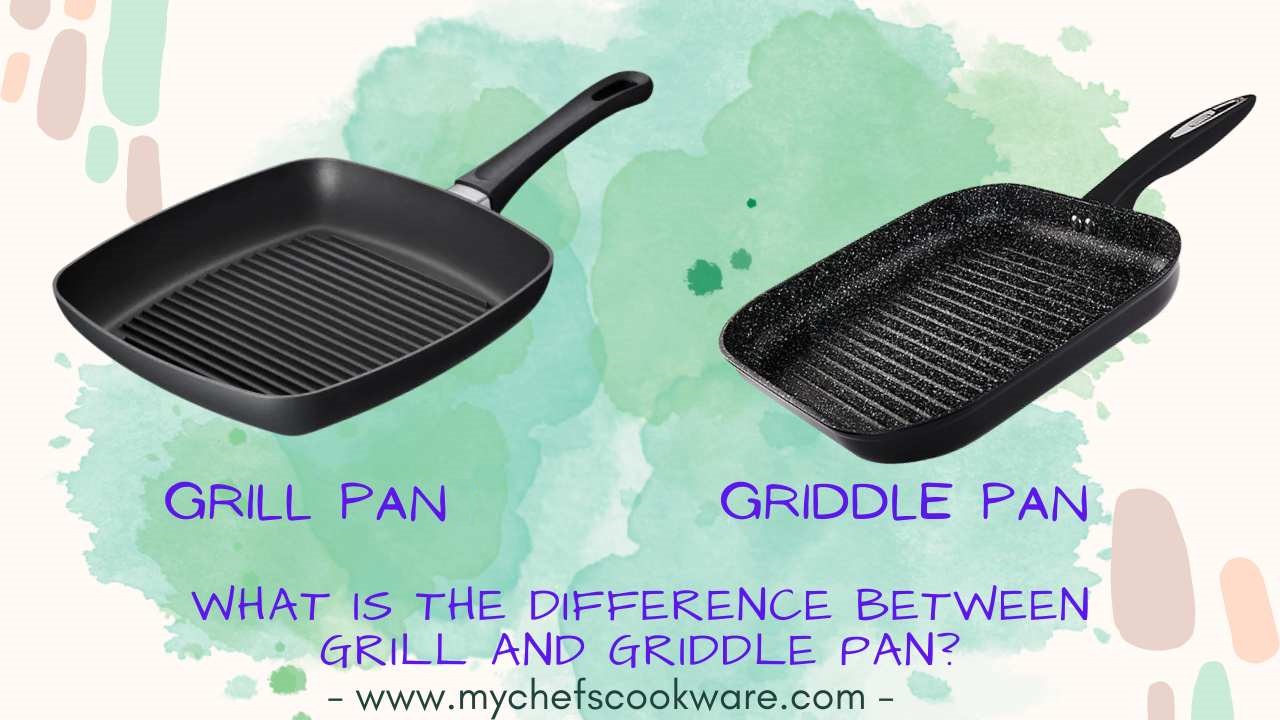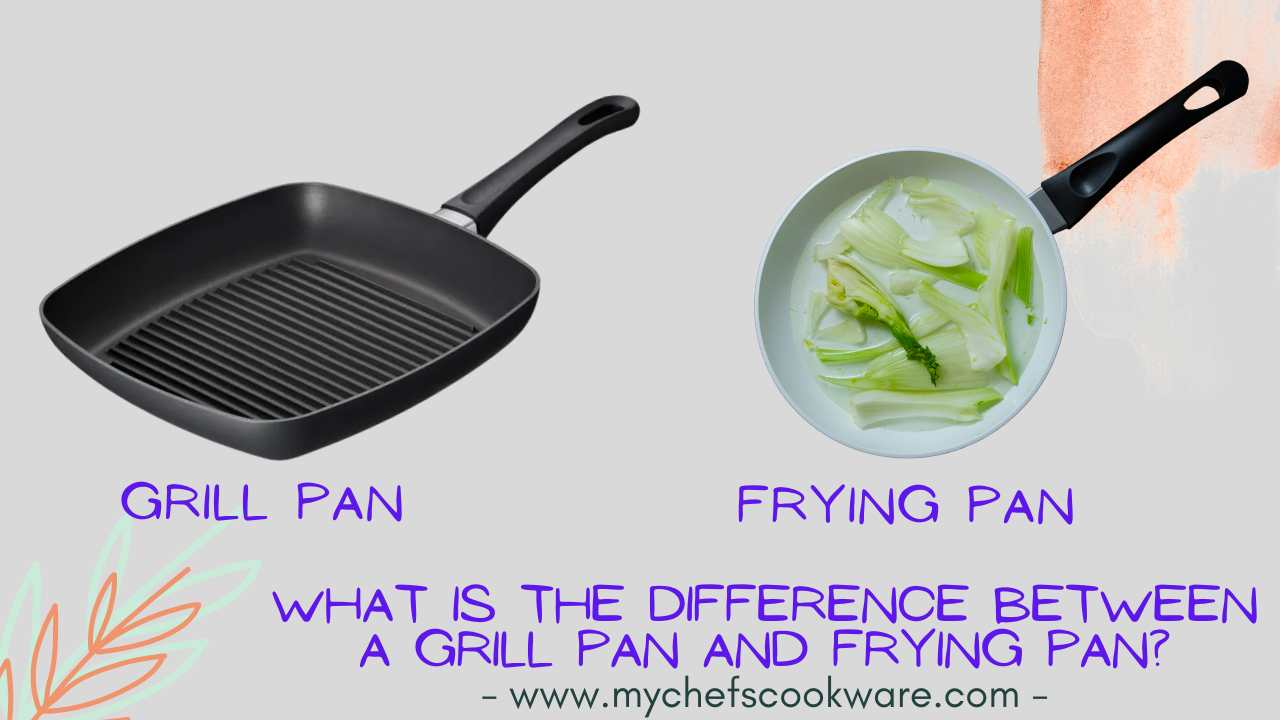Grill pans are cookware designed to replicate the grilling experience of traditional outdoor grills. These pans typically feature ridges on the surface that allow fats and juices to drip away from the food, resulting in a seared and marked appearance. One of the unique benefits of grill pans is that they can be used on a stovetop or oven, providing a flexible cooking method for a range of foods such as meat, seafood, and vegetables.
What is the difference between grill pan and griddle pan?

Cookware such as a grill pan and griddle pan are both useful for a variety of cooking tasks. However, they differ in design and function. A grill pan features ridges on its surface that allow excess fat and juices to drip away from food, creating grill marks. The ridges also prevent food from sticking to the pan, making it suitable for cooking meats, seafood, and vegetables. It is commonly used for stovetop or oven cooking.
On the other hand, a griddle pan is equipped with a flat and smooth surface, ideal for cooking items that need to be flipped or moved around, such as pancakes, eggs, and bacon. The flat surface promotes even heat distribution and is suitable for a range of cooking methods such as sautéing, pan-frying, and searing. It is usually made of cast iron or aluminum. In brief, a grill pan is perfect for achieving a seared, grill-marked appearance, while a griddle pan is great for cooking items that need to be flipped easily and with even heat distribution.
What type of pan is best for grilling?

When grilling, it’s generally best to use a pan that is made of a material that can withstand high temperatures without warping or breaking. Some good options include cast iron, stainless steel, and aluminum.
- Cast iron is a popular choice for grilling because it can be preheated to very high temperatures and retains heat well, which allows for even cooking and a nice sear on the food. It’s also durable and long-lasting and can be used on both the stovetop and the grill. However, it’s heavy and can be difficult to clean, so it’s important to season it properly and keep it oiled to prevent rust.
- Stainless steel is another good option for grilling because it’s durable and easy to clean. It also doesn’t react with acidic foods, which makes it a good choice for marinades and sauces. However, it doesn’t retain heat as well as cast iron, so it may not be the best choice for getting a sear on the food.
- Aluminum is also a good choice for grilling as it heats quickly and evenly. It is lightweight, easy to clean, and also affordable. However, it’s not as durable as cast iron or stainless steel and can warp or bend if it’s heated unevenly or if it’s exposed to very high temperatures.
- Non-stick pans are not recommended for grilling as the high temperatures can cause the non-stick coating to break down and release harmful chemicals into the food.
Ultimately, the best pan for grilling is going to depend on your personal preferences and the types of dishes you plan to prepare. If you’re planning on doing a lot of grilling, it’s a good idea to invest in a high-quality pan that will last for many years and make your grilling experience more enjoyable.
What is the difference between a grill pan and frying pan?

Both a grill pan and a frying pan are stovetop cookware options, but they serve different purposes. A grill pan has ridges on the bottom that create grill marks and allows fat to drip away while grilling meats, seafood, and vegetables. On the other hand, a frying pan, also known as a skillet, has a flat bottom and sloping sides for flipping and tossing food while sautéing, frying, or browning. While grill pans are typically made of cast iron or stainless steel, frying pans can be made from a variety of materials like cast iron, stainless steel, aluminum, or non-stick. Essentially, a grill pan is intended for grilling, while a frying pan is a versatile option for various cooking methods.
What makes the grill pan special than an ordinary frying pan?

A grill pan is special because it is designed specifically for grilling. It has ridges on the bottom that mimic the look and feel of food that has been grilled on a barbecue. These ridges help to create characteristic grill marks on the food, as well as allow excess fat and juices to drip away from the food. This not only helps to prevent the food from sticking to the pan but also allows for a healthier cooking process by reducing the amount of fat that stays in the food. Additionally, because the ridges are elevated, it also allows heat to circulate around the food more effectively, which helps to cook it more evenly.
Frying pans, on the other hand, are primarily designed for sautéing, frying, and browning food. They typically have a flat bottom and sloping sides, which are great for flipping, tossing, and stirring food around. They are also versatile cookware that can be used for a wide range of cooking tasks, from making eggs to searing steaks. But their main job is to cook food with little or no oil, and its bottom are flat, which don’t give the same marks as grill pans.
In summary, while a frying pan can be used for a variety of tasks, a grill pan is specifically designed for grilling and gives food the traditional grill marks that one would expect from outdoor grilling.
Is it worth buying a grill pan?
Whether or not a grill pan is worth buying depends on your personal cooking preferences and needs.
Here are some pros and cons that may help you decide:
Pros:
Indoor grilling: Grill pans allow you to achieve the char-grilled marks and smoky flavor of outdoor grilling while cooking indoors.
Versatility: Grill pans can be used to cook a wide range of food items such as steak, chicken, fish, vegetables, and even sandwiches.
Easy to clean: Grill pans are often easy to clean and maintain.
Cons:
Limited Capacity: Grill pans have a limited capacity and may not be able to accommodate larger food items or cook for a big group of people.
Less control over heat: While cooking on a stovetop, you have better control over heat than outdoors, but the heat distribution may not be as even as a gas or charcoal grill.
Smoke: Using a grill pan on the stovetop can cause smoke in the kitchen, specially if the food gets too close to the heat source.
If you’re looking for a versatile and convenient way to achieve the char-grilled marks and smoky flavor of outdoor grilling while cooking indoors, a grill pan can be a great investment. On the other hand, if you’re looking to cook large quantities of food or need more control over heat, a traditional outdoor grill may be a better option. It ultimately depends on your needs and preferences and whether or not you value the benefits that a grill pan provides.
